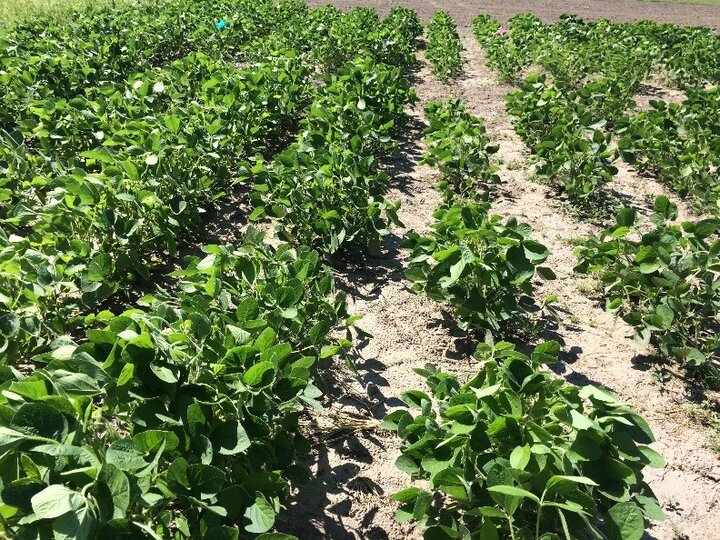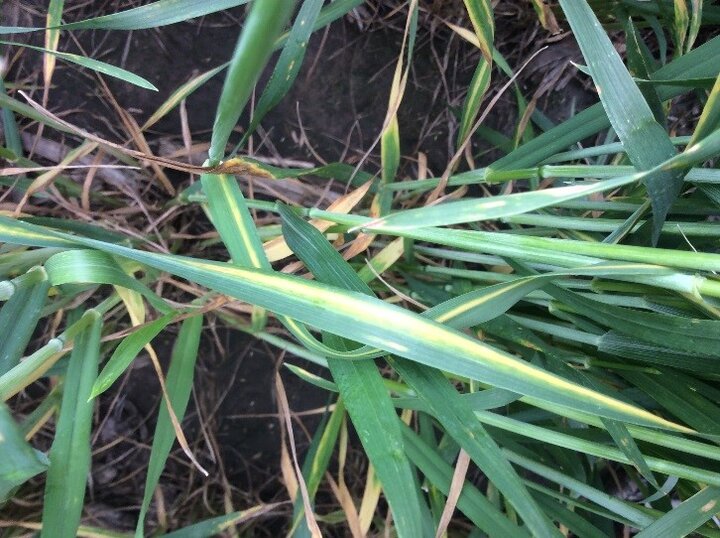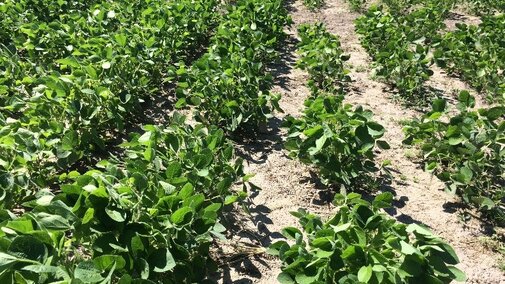Planting fungicide-treated seeds has been doing a good job, helping to reduce the impacts of soilborne and root diseases in crops. However, our 2017 survey revealed widespread soilborne diseases in many crop hosts and many field locations in the state. The crops include corn, dry bean, soybean, and wheat. Symptoms and field observations included patches without plants or with stunted, discolored, or wilting and drying plants, and reduced stand population. Diseases were more common in areas with low elevation in the field. This update is provided on four soilborne pathogens: Rhizoctonia, Fusarium, Phytophthora, and Cephalosporium.
Rhizoctonia Root Rot
Plant samples showing symptoms typical of Rhizoctonia were from many fields across the state. Samples of corn, dry bean, soybean, and wheat were collected and isolates were recovered. In 2016 and 2017, a total of 144 isolates were collected, which belonged to two major groups - R. solani and R. zeae. The R. solani isolates belonged to diverse sub groups (anastomosis groups) and the most common group was R. solani AG-4. Previously, R. zeae was not considered to be a major pathogen of soybean but in the ongoing study, many recovered R. zeae isolates have been found to be pathogenic to soybean, corn, and wheat. Data being generated from the study supports the need for a good strategy for integrated management of Rhizoctonia root rot diseases. The Rhizoctonia isolates are being further examined in greenhouse and field studies to understand their virulence and the effect of fungicide treatment, biological control product, and environmental conditions on disease development and management. Substantially reduced stand population of soybean was observed when seeds without fungicide seed treatment was planted in a field study with Rhizoctonia solani (Figure 1).

Fusarium Root Rot
In 2017, a survey of Fusarium diseases in corn, soybean, and wheat fields was conducted and a total of 137 isolates, which belonged to 11 different Fusarium groups were recovered across the state from 2016 to 2017. Among the groups, Fusarium oxysporum and F. graminearum were the two most widely distributed and virulent across Nebraska and they present the highest risks of Fusarium root rot in corn, soybean, and wheat crops. Greenhouse tests on the pathogenicity of isolates showed that close to half (42%) of all the isolates tested were cross-pathogenic to the three crops. This indicates that the same strains that caused disease in corn are able to cause disease in soybean as well as wheat. In a field where such isolates of Fusarium were present, crop rotation to manage the disease will be less effective.
Phytophthora Root And Stem Rot Diseases
Phytophthora disease is favored by warm and wet weather and saturated conditions, especially in poorly drained clay or compacted soils. Patches resulting from killed seeds after planting or after seedling emergence were seen in certain fields in 2017. Although it is more common early in the growing season, it may also damage plants throughout the growing season. Symptoms of the disease include rotted root, stunting, and yellowing of leaves in tolerant varieties while in susceptible varieties, additional symptoms include soft stem, plants death, and browning of leaves or wilted leaves that remained attached after plant death.
Cephalosporium Stripe
Cephalosporium stripe in wheat is caused by Cephalosporium gramineum. The incidence of this disease was high in 2017 as it has been increasing in Nebraska in the last three years. The conditions in spring 2017 was conducive for the disease as infection is favored by cool, 45 to 55°F, and moist conditions. One to three longitudinal yellowish stripe running through the leafsheat and cum of a maturing green leaf is the diagnostic symptom of the disease. During jointing and heading, the yellow stripe will become very prominent. It was more severe in wheat fields that follow wheat or other susceptible cereal or grasses such as oat, barley, rye, triticale, and grasses such as downy (cheatgrass) brome. In 2017, Cephalosporium stripe was more prevalent in low, wet areas of the field and acid soils. In most of the fields, the symptoms occurred on the lower leaves.

Management of Root and Soilborne Diseases
The following strategies are recommended for management of these diseases.
- Planting fungicide treated seeds is very important to manage these diseases (all except Cephalosporium stripe).
- Increase drainage, if possible, to reduce soil saturation, especially for Phytophthora diseases.
- Crop rotation is very useful but effectiveness may reduce when pathogens are cross-pathogenic to rotation crops.
- Plant resistant varieties when available.
- Timing of planting e.g., seeding 10 days later can significantly reduce Cephalosporium stripe.
- Use biological control products.
- Use an integrated disease management strategy that combines some or all of these strategies.

